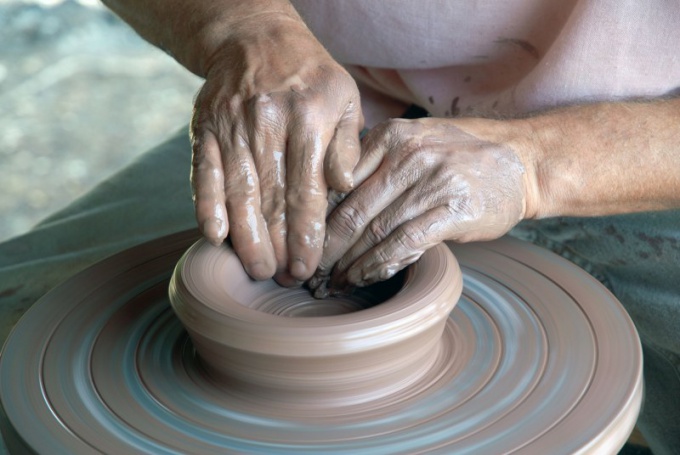You will need
- - clay;
- - dishes to soak;
- water;
- acid;
- - pipette;
- - hammer;
- - burlap;
- - a fine metal sieve.
Instruction
1
In nature, clay is found mainly in damp places. The property of this material is that it retains water. Find a place where you can dig up this material by plants. On clay soils grows great mother and stepmother. Almost any body of water is formed because clay allows water to seep into the ground. The question is, how deep it is. It is advisable to find the place where it reaches the surface. Most often it is rivers and swamps, but it could be just a low place between hills. Most often occur blue and green clay. The color depends on the composition. Dig up the desired amount of material.
2
Check how clay is good for sculpting. Break off a small piece. Moisten the clay with water so that the moisture is completely absorbed. Knead the clay. If when pressed with fingers it turns visible shiny mark, the material is quite suitable. Roll into small "sausage" and bend it into a ring. Clay high quality will give visible cracks.
3
Check the material on the presence of impurities. Clay should not react to acid. Squeeze a piece of wet material a little hydrochloric or sulfuric acid. If effervescence, which indicates the reaction is not — then all right.
4
Break the clay into small pieces. For this purpose, will fit even a wooden mallet, but you can also use a regular hammer. The pieces fold into a large enough metal container and allow them to dry completely.
5
Heat water and pour over the clay. Over the surface may remain small pieces of the surface. Wait until the clay swells. Mix and mash.
6
Lay on the table a piece of burlap or other coarse fabric. Place on a tissue clay dough and allow it to get rid of excess moisture. In the process don't forget to mix and knead the material.
7
Go to the actual cleaning. Clay can be cleaned of impurities in several ways. You can detach from existing you have small pieces of dough, knead them with your fingers, simultaneously freeing from small pebbles and bits of debris.
8
Use a metal mesh. This can be, for example, a sieve. Swollen and already lost excess water to push the clay through the mesh. All the excess will remain on the surface.
9
If you clay a lot or it is very dirty, you can do another way. Lay the slices of clay into a large metal dish and fill it with water. As it should stir to make a mass consistency resembles liquid sour cream. Let it settle for two hours. The stones will settle to the bottom, and small particles of debris can float to the surface. Collect them, trying not to shake the contents of the pan.
10
Carefully pour the clay into another vessel. Place it in a warm place to excess moisture has evaporated. This is best done outdoors on a Sunny plot. Do not close the container. Wait until the contents of the basin or the pan will thicken and gain needed flexibility and will be suitable for modeling.
